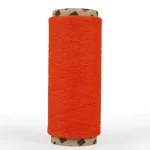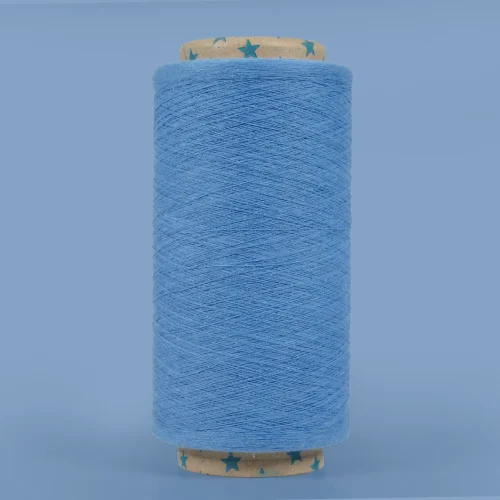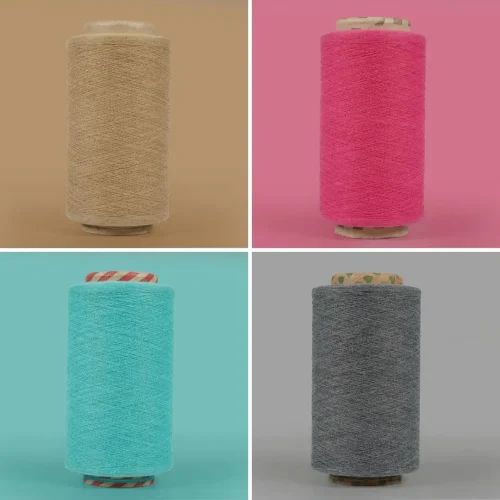
The Recycled Yarn Revolution for Sustainable Fashion
8 May 2025
The Regenerated Yarn Technology That Turns Textile Waste Into Treasure
13 May 2025Regenerated yarns are at the forefront of sustainability transformation in the textile industry. Produced from textile waste, these yarns offer numerous environmental benefits, from conserving natural resources to reducing carbon footprints. At Seryaman Textile, we support sustainable textile production with a wide range of yarn counts and colors without compromising on quality. As a vital part of the circular economy, regenerated yarns are shaping the future of the industry.
The textile industry is one of the sectors with the highest environmental footprint worldwide. Traditional textile production causes significant environmental harm due to excessive water consumption, chemical usage, and high carbon emissions. As the need for sustainable solutions grows, regenerated yarns emerge as a promising alternative. At Seryaman Textile, we are proud to be one of the pioneers in this transformation.
In this article, we will examine what regenerated yarns are, their critical role in sustainable textile production, their environmental benefits, and economic advantages. We will also explore production processes, quality standards, and their future potential. Our goal is to provide a comprehensive perspective on how sustainability transformation in the textile industry can be achieved.
What is Regenerated Yarn?
 Regenerated yarns are renewed yarns produced from textile waste or post-consumer materials. In this process, waste materials are reprocessed to be reusable, thereby reducing the need for new raw materials. Regenerated yarns are a cornerstone of sustainable textile production.
Regenerated yarns are renewed yarns produced from textile waste or post-consumer materials. In this process, waste materials are reprocessed to be reusable, thereby reducing the need for new raw materials. Regenerated yarns are a cornerstone of sustainable textile production.
Traditional yarn production typically requires intensive use of natural resources. For instance, producing a cotton t-shirt consumes approximately 2,700 liters of water. However, this consumption can be significantly reduced through regenerated yarns. Furthermore, utilizing waste materials contributes to the circular economy and reduces the amount of textile waste going to landfills.
Environmental Impacts of Regenerated Yarns
Mission to Protect Natural Resources
Regenerated yarns play a vital role in protecting natural resources. Every year, millions of tons of textile waste are sent to landfills, but reprocessing these materials reduces waste and the need for virgin raw materials. This is especially critical in light of the environmental burden of cultivating water-intensive crops like cotton.
Water consumption in the textile industry has reached alarming levels globally. Regenerated yarn production uses up to 95% less water compared to traditional methods. This is particularly crucial in regions facing water scarcity.
Reducing Carbon Footprint
Reducing carbon emissions is critical in the fight against climate change. Regenerated yarns leave a significantly lower carbon footprint compared to conventional yarns. Collecting, processing, and converting waste materials into yarn requires less energy than producing new raw materials.
Studies show that regenerated polyester production causes up to 75% less carbon emissions compared to new polyester production. Additionally, the release of methane gas from burning or landfilling waste is prevented, resulting in dual environmental benefits.
Seryaman Textile’s Regenerated Yarn Production Process
Raw Material Collection and Classification
At Seryaman Textile, our regenerated yarn production begins with the collection of high-quality raw materials. We carefully gather and classify textile factory waste, garment cutting scraps, and post-consumer textile products. During this stage, sorting is done based on color, material type, and quality.
Collected materials are first cleaned of foreign substances and then made ready for processing. Proper classification of raw materials is a critical step that directly affects the final product quality. Therefore, our experienced team conducts detailed inspections of all materials.
Processing with Advanced Technology
The sorted waste materials are shredded into fibers using specialized machinery. These fibers are then cleaned, blended, and prepared for yarn production. At Seryaman Textile, we utilize advanced technology equipment that operates with maximum efficiency and minimal environmental impact.
With our open-end (rotor) yarn production technology, we can produce yarns ranging from 6/1 to 30/1 in different counts. We also offer more than 99 color options, providing customized solutions for our clients. By using energy-efficient equipment in this process, we further reduce our carbon footprint.
Economic Advantages of Regenerated Yarns
Cost-Efficient Approach
Regenerated yarns offer an economically attractive alternative for textile manufacturers. In today’s market, where raw material costs are rising, using waste materials provides significant cost savings. It also reduces dependency on volatile-priced raw materials like cotton.
When waste collection and processing operations are optimized, regenerated yarn production becomes more cost-effective in the long term. Moreover, growing consumer demand for sustainable products offers competitive advantages for companies operating in this field.
Contribution to the Circular Economy
Transitioning to a circular economy model in the textile sector is crucial for both environmental and economic sustainability. Regenerated yarns, central to this model, transform waste into value. This increases resource efficiency and creates new business opportunities.
European Union regulations like the Green Deal will favor businesses that adopt circular economy practices in the coming years. Thus, companies investing in regenerated yarn production are already aligning with future legal frameworks.
Quality Standards of Regenerated Yarns
Durability and Performance
 One of the main barriers to the widespread use of regenerated yarns is the perception of inferior quality. However, with today’s technological advancements, regenerated yarns are comparable to – and in some cases outperform – conventional yarns. At Seryaman Textile, our regenerated yarns meet international standards for durability and performance.
One of the main barriers to the widespread use of regenerated yarns is the perception of inferior quality. However, with today’s technological advancements, regenerated yarns are comparable to – and in some cases outperform – conventional yarns. At Seryaman Textile, our regenerated yarns meet international standards for durability and performance.
Our cotton-polyester blend regenerated yarns, in particular, yield excellent results in durability, elasticity, and colorfastness. Thanks to our R&D efforts, we continuously improve the performance of regenerated yarns.
Certification and Assurance
To validate the quality and sustainability claims of regenerated yarns, international certification systems are crucial. Certifications such as the Global Recycled Standard (GRS) and Recycled Claim Standard (RCS) guarantee that products are genuinely sourced from sustainable materials.
At Seryaman Textile, all our production processes and products are regularly audited by international certification bodies. This transparency provides assurance to our customers and enhances our brand value.
Looking Ahead: Regenerated Yarns and Sustainability
Technological Innovations and R&D
Continuous innovation is driving progress in regenerated yarn technologies. Significant research is being conducted on separating blended materials, converting colored textiles, and improving processing efficiency. These developments will further expand the usability and quality of regenerated yarns.
At Seryaman Textile, we invest heavily in R&D. Our future goal is to develop regenerated yarn production technologies that require even less energy and water while maintaining high quality. To achieve this, we collaborate with universities and research institutions.
Consumer Awareness and Market Demand
Demand for sustainable textile products is steadily increasing. Consumers are paying more attention to the environmental impact of their purchases and expect transparency from brands. This trend is encouraging the use of regenerated yarns.
Fashion brands and retailers are also turning to regenerated yarns to meet their sustainability goals. Many global brands have pledged to increase the share of regenerated materials in their collections. We anticipate this trend will continue to grow in the coming years.
Conclusion
Regenerated yarns play a critical role in the sustainable future of the textile industry. From preserving natural resources to reducing carbon emissions, from economic benefits to quality assurance – they offer numerous advantages. These yarns are one of the strongest representatives of the circular economy model in the textile sector.
At Seryaman Textile, we are committed to continuing our investments and research in regenerated yarn technologies. We believe that it is possible to achieve environmental sustainability alongside economic growth. Our aim is to popularize the use of regenerated yarns and maintain our leadership in this field. We invite all stakeholders in the textile industry to be part of this sustainable transformation.



